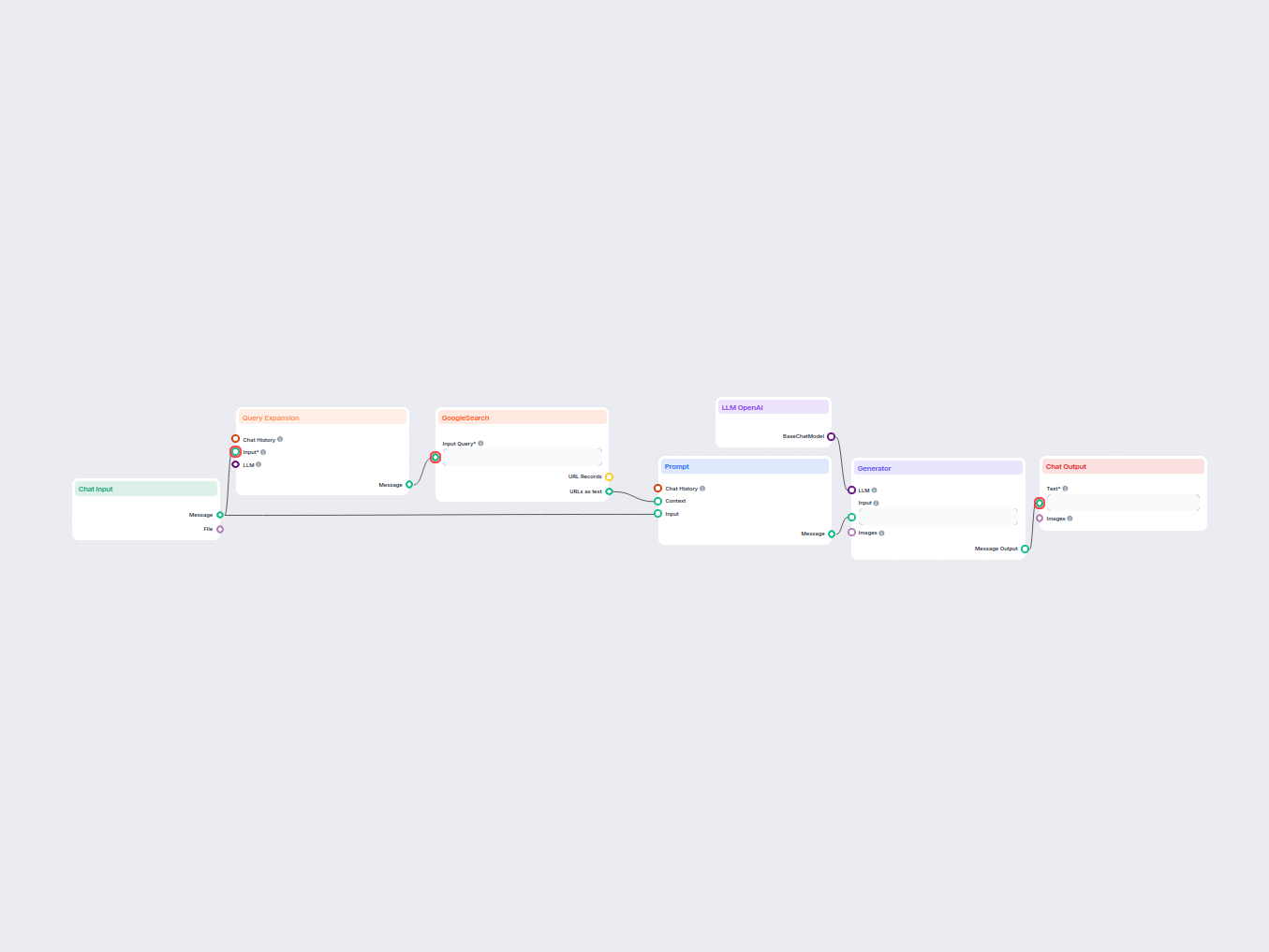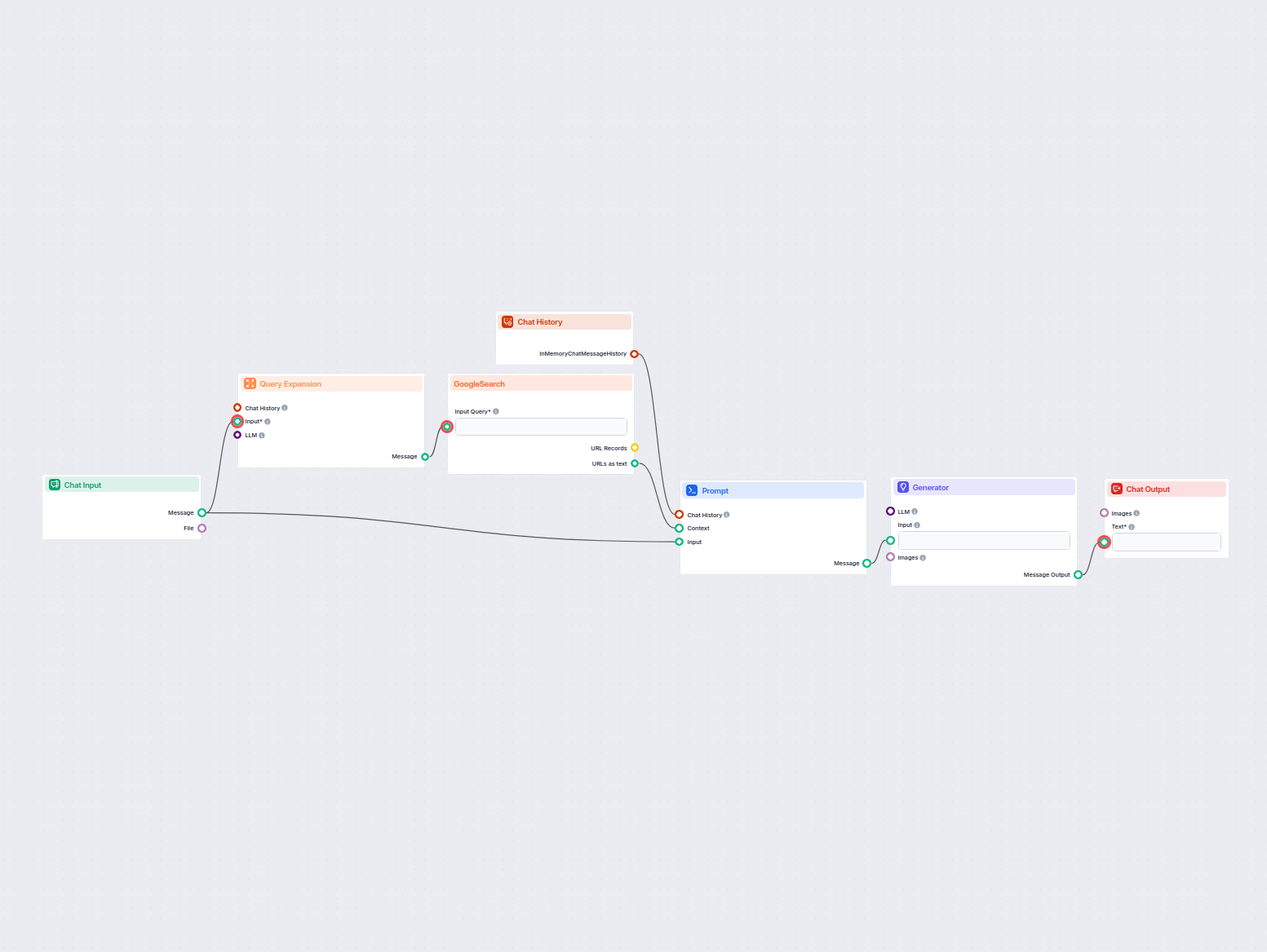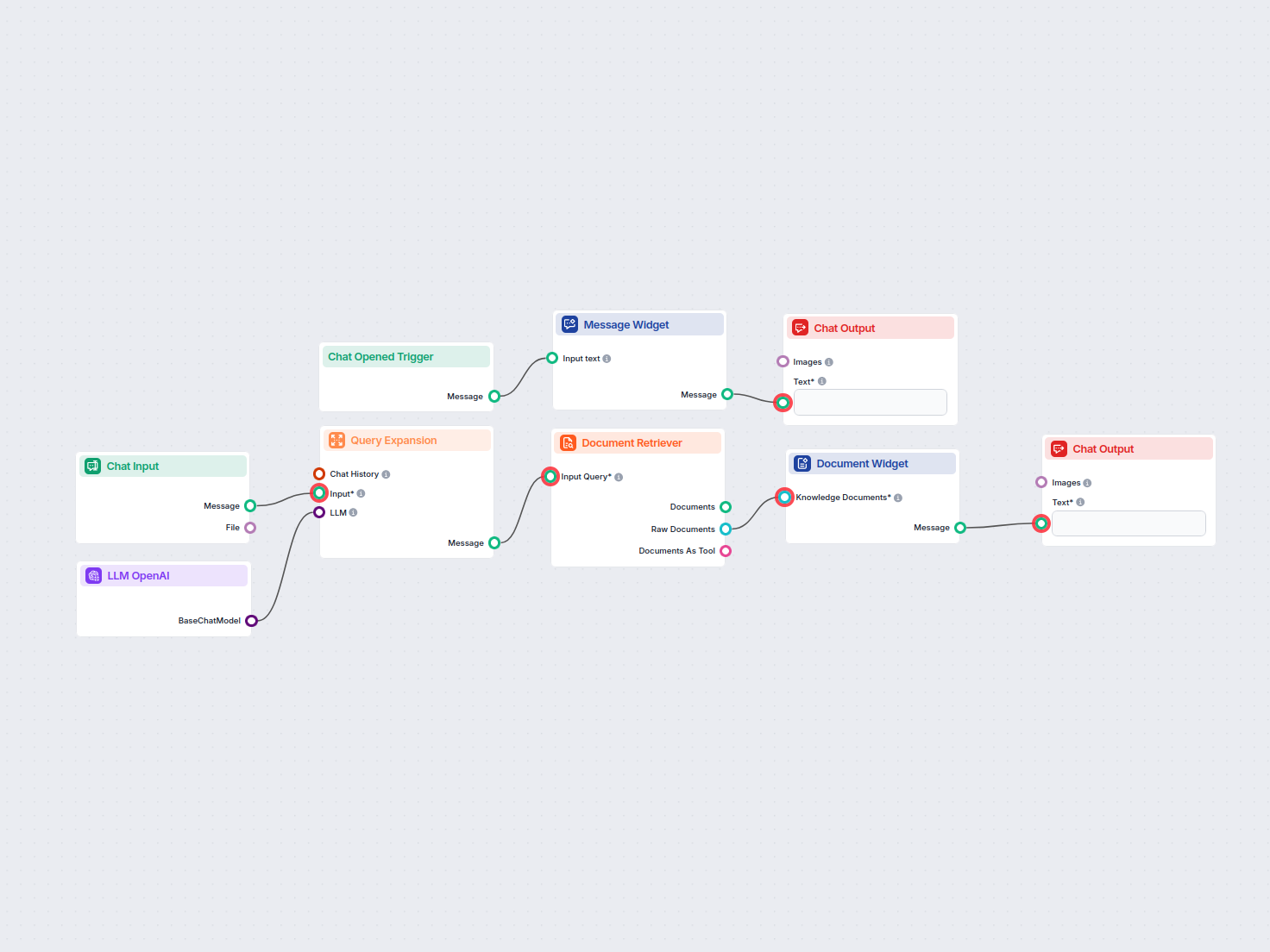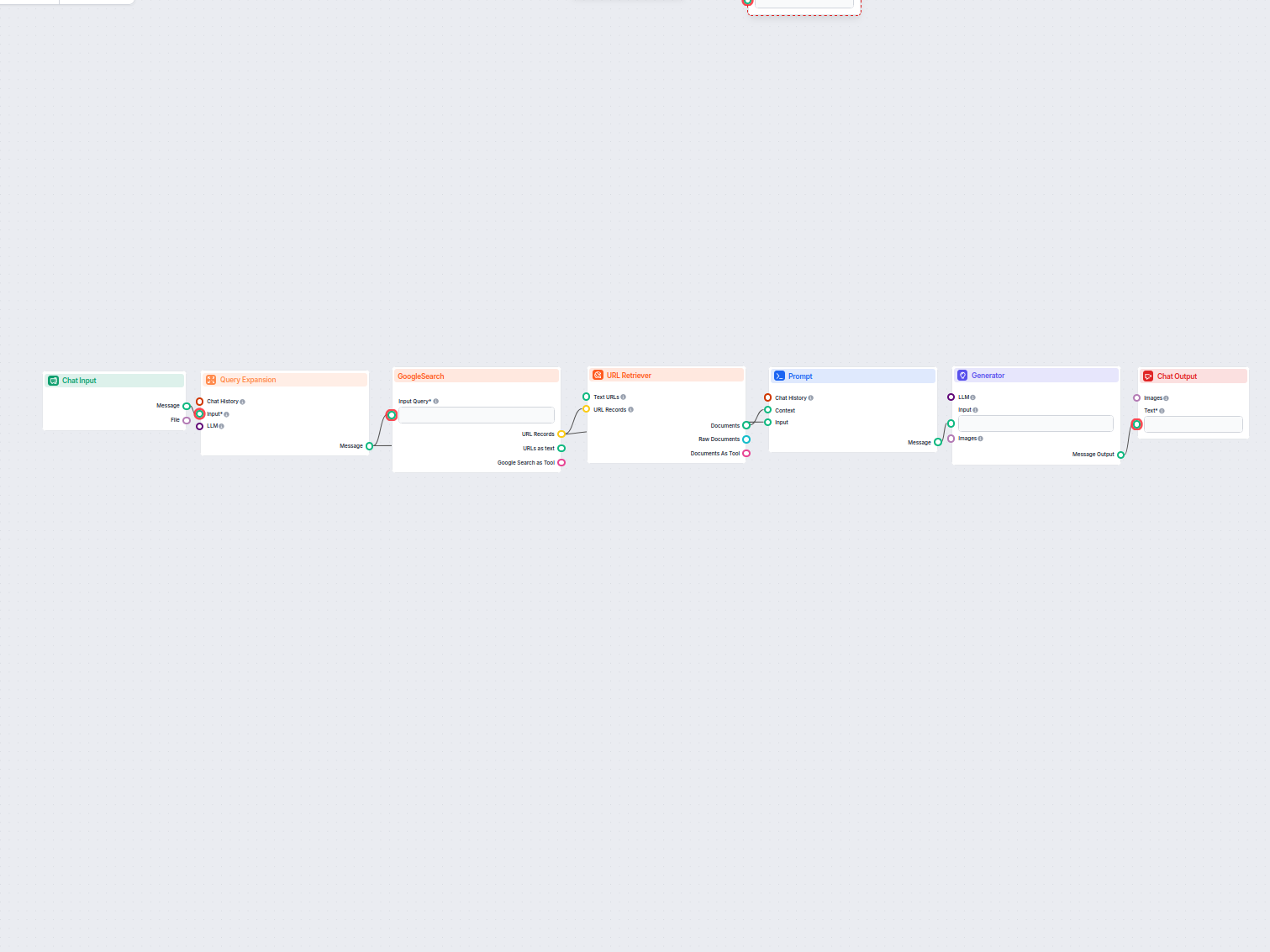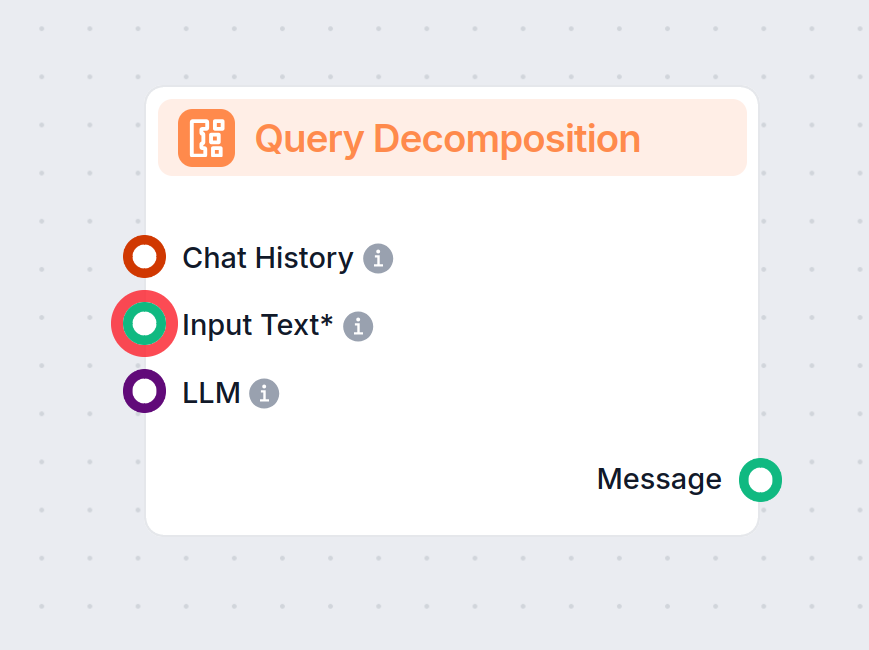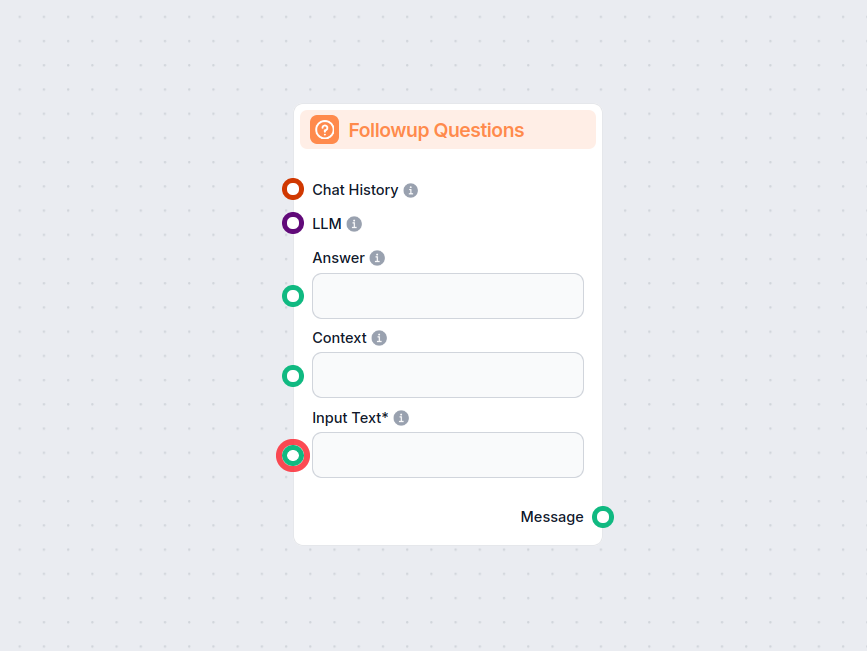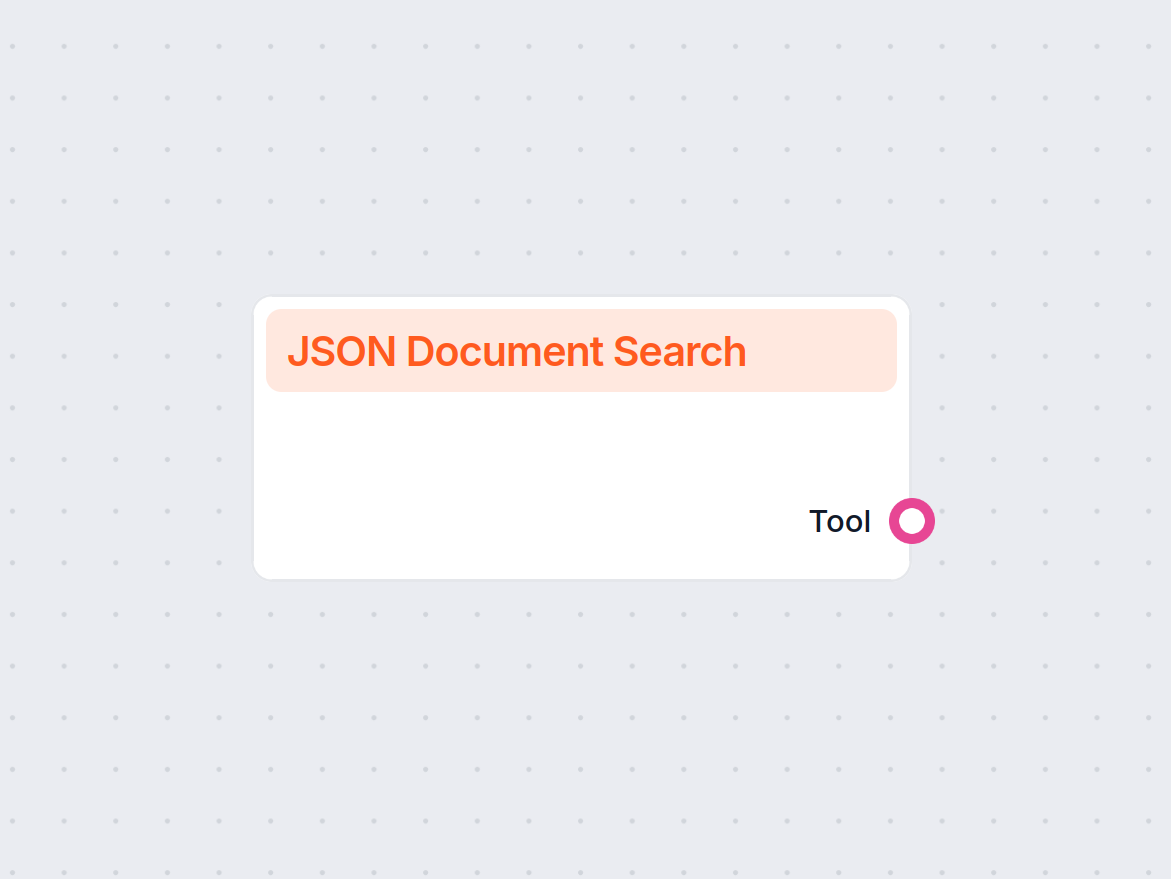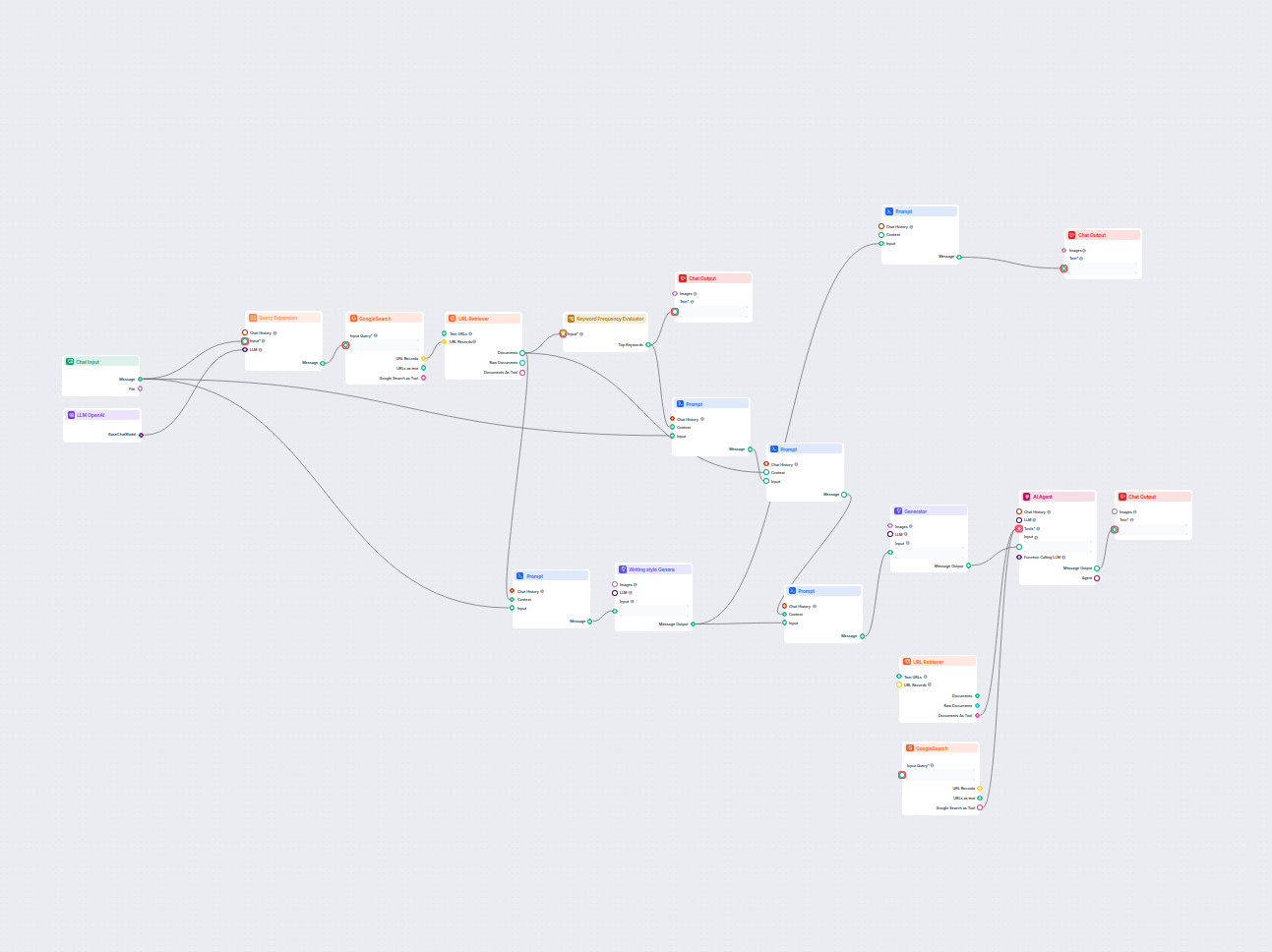
AI Glossary Article Generator
Generate in-depth, SEO-optimized glossary articles by leveraging AI and real-time web research. This flow analyzes the top-ranking content and writing styles, e...
Component description
The Query Expansion component is designed to paraphrase a given input text into multiple alternative queries. Its primary purpose is to enhance semantic search within a knowledge base by generating various rewordings of the original query, thereby increasing the likelihood of matching relevant information during retrieval processes.
This component takes an initial input message and produces several alternative queries that express the same intent in different ways. By leveraging a language model, it can generate these paraphrased queries, making downstream search or information retrieval tasks more robust and comprehensive. This is particularly useful in AI workflows that involve searching large corpora or knowledge bases, as it mitigates the issue of semantic mismatches between user queries and stored documents.
The component supports the following inputs:
| Field | Type | Required | Description |
|---|---|---|---|
| Input | Message | Yes | The main text (query) to be expanded into alternative forms. |
| LLM (Model) | BaseChatModel | No | The language model used to generate paraphrased queries. If not provided, a default model may be used. |
| Chat History | InMemoryChatMessageHistory | No | Previous chat messages that provide context for generating more relevant query alternatives. |
| Number of Alternatives (Limit) | Integer | Yes | How many alternative queries to generate. Default is 5. |
| Include Original Query | Boolean | No | Option to include the original query in the list of alternatives (default is true). |
| System Message | String (multiline) | No | Additional system-level instructions appended to the prompt to guide the model’s behavior. |
| Name | Type | Description |
|---|---|---|
| Message | Message | A message containing the list of alternative queries. |
The output is a message object that includes all generated alternative queries (and possibly the original, if specified). These alternatives can be used directly in downstream search or analysis components.
Suppose a user asks, “How do I reset my password?” The Query Expansion component might generate alternatives like:
These expanded queries can then be used to search a knowledge base, improving the chances of finding the most relevant articles.
| Feature | Description |
|---|---|
| Paraphrasing | Generates multiple alternative queries for a single input |
| Customizable Model | Supports selection of different language models |
| Context-Aware | Can use chat history to inform query generation |
| Output Flexibility | Optionally includes the original query in the output |
| Advanced Prompting | Accepts a system message to tailor the model’s paraphrasing behavior |
This component is a valuable building block for any AI workflow that requires robust, context-aware query expansion for improved search and retrieval capabilities.
To help you get started quickly, we have prepared several example flow templates that demonstrate how to use the Query Expansion component effectively. These templates showcase different use cases and best practices, making it easier for you to understand and implement the component in your own projects.
Generate in-depth, SEO-optimized glossary articles by leveraging AI and real-time web research. This flow analyzes the top-ranking content and writing styles, e...
Generate unique, SEO-optimized web page titles using AI and live Google search data. Enter your target keywords and receive a high-ranking title suggestion tail...
This workflow analyzes Google's search results for a given keyword, extracting insights about search intent, competitor strategies, and content opportunities to...
Easily search and retrieve information from private knowledgebase documents using semantic search powered by AI. The flow expands user queries, searches across ...
This AI-powered workflow analyzes the content structure of your web page, compares it with top-ranking competitor pages, and provides tailored recommendations o...
Generate well-structured web page content based on the analysis of top-ranking Google pages for any keyword. This flow automates keyword research, extracts comp...
The Query Expansion finds synonyms or related words and fixes spelling mistakes to help the Bot understand your query.
Users will have different language levels and vocabulary styles. Without using the expansion, your bot may occasionally misunderstand queries.
Both help the bot understand the query better. Query Expansion appends incomplete or faulty queries, making them clear and complete. On the other hand, Task Decomposition takes complex or compound queries and breaks them down into smaller executable steps.
Boost your chatbot's accuracy and user satisfaction with FlowHunt's advanced Query Expansion component.
Query Decomposition in FlowHunt breaks complex queries into smaller subqueries, enhancing AI response accuracy. It simplifies input for chatbots, ensuring detai...
The Followup Questions component in FlowHunt intelligently generates relevant questions for users to ask next, based on the current conversation, context, and p...
The JSON Document Search component enables powerful search capabilities within JSON files, using either text search or advanced query expressions. Connect exter...
Cookie Consent
We use cookies to enhance your browsing experience and analyze our traffic. See our privacy policy.
